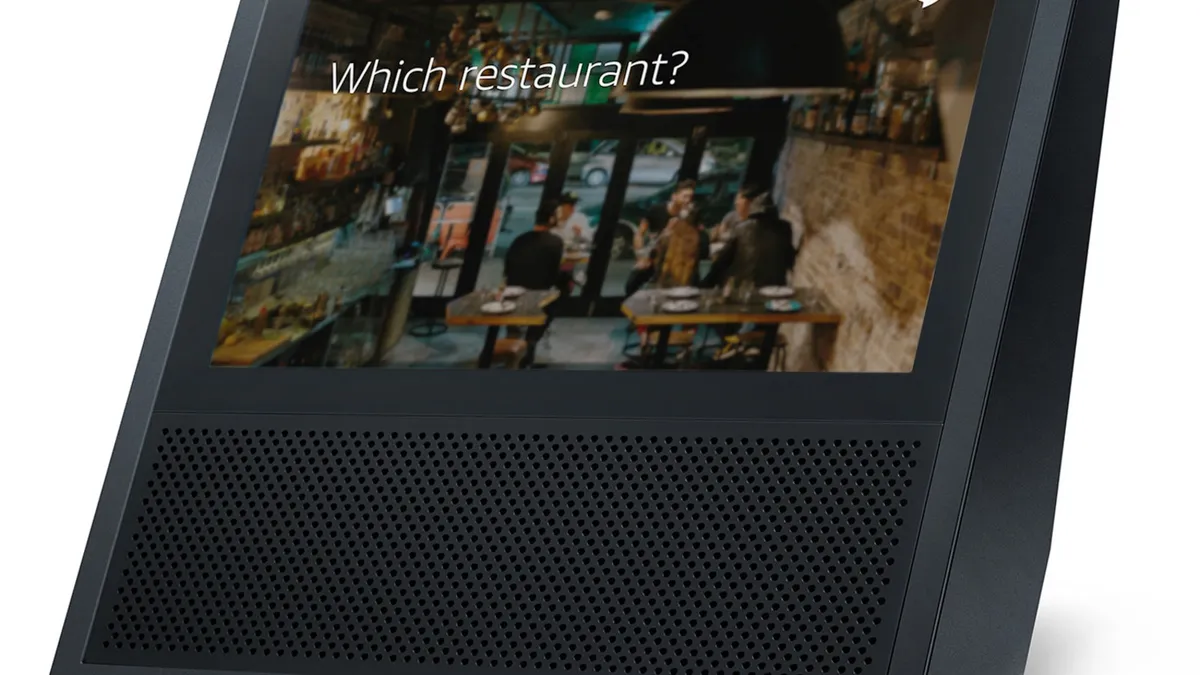Dive Brief:
- The new Amazon Echo Show, an Alexa-powered device that adds a screen to the popular smart speakers is getting original content from media companies including Time Inc. and Scripps, per Ad Age, and Meredith Corporation’s Allrecipes, as reported by The Drum. Online restaurant booking service OpenTable is also adding a new Alexa skill within Echo Show, according to a press release.
- Scripps Networks' Interactive Food Network upgraded its Alexa skill for the device. Time Inc. is bringing a 7 a.m. ET video flash briefing from its People brand with breaking news in entertainment hosted by Jeremy Parsons and customized for the Amazon Echo Show, per a press release.
- The offering from Allrecipes turns cooking shows of the past into interactive and customizable experiences for users with more than 60,000 paths for users to choose from Stan Pavlovsky, Meredith Digital's president, told The Drum.
Dive Insight:
The new device is an Alexa-powered home digital assistant that adds a seven-inch touchscreen to the Echo’s voice-activated controls. One result of the addition is publishers and marketers seem to be eager to create original content for the device given the richer, video user experience. In fact, Echo Show may be a response to both consumers and developers demanding richer experience given that early results have suggested low engagement rates. There are currently more than 10,000 Alexa skills — the mini interfaces for engaging with Alexa users — from brands and developers, many of which are likely to be updated for the Echo Show in the coming months.
The Echo Show could eventually open up more opportunities for advertising and marketing on the devices as well since users have become accustomed to visual digital ads. However, it is not clear at the moment when and if advertising will become available. Amazon, for now, seems to be focusing on building the user experience and recently made a change that drops ads from Alexa third-party skills. Amazon is clearly trying to maintain its early lead in the home digital assistant space by enhancing the user experience.
One of the early challenges with devices like Amazon Echo and Google Home is that the audio-only experience left publishers and marketers alike trying to understand how to best approach advertising without making the experience seem overly intrusive. It hadn’t become clear if users would find ads too interruptive when using the devices for information such as searching for movie listings or controlling household items like lighting or the thermostat. Video-driven informative content is more familiar ground for publishers and users alike as a place where ads would be more expected.














